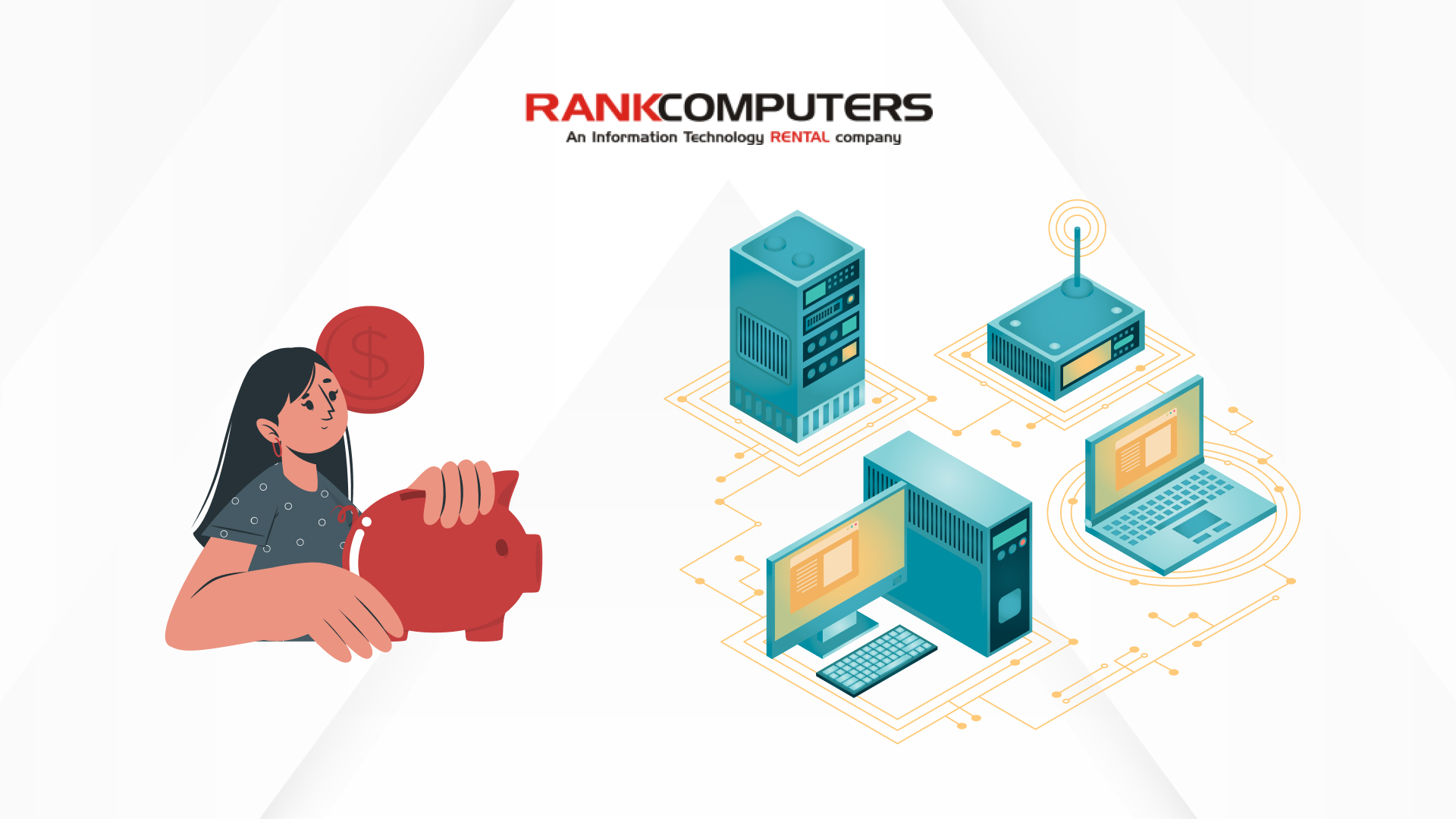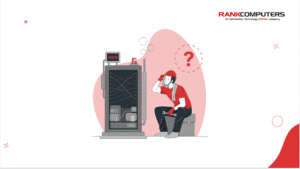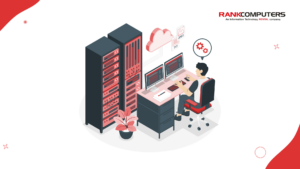In today’s rapidly changing digital and technological landscape, businesses face a common challenge: finding the right balance between innovation and cost efficiency.
Technology is advancing at an unprecedented pace, and companies need to keep up by investing in the latest IT equipment. While this allows them to take advantage of new features, boost productivity, and meet the ever-changing needs of their customers, these investments can be expensive and strain limited budgets, hindering financial growth.
In this blog post, we aim to simplify IT cost optimisation by providing practical strategies to reduce expenses on IT equipment. These strategies will help your business save money without sacrificing performance or impeding its technological progress.
Strategies to Save on IT Equipment
Evaluate Your Current IT Needs
To ensure efficient decision-making concerning IT equipment, it is essential to accurately evaluate your organisation’s current needs. Begin by conducting a comprehensive inventory of your existing equipment.
Ask questions like:
- Do your employees require i7 processors?
- Would a powerful workstation enhance the performance of your graphic designers?
- Could you consider utilising cloud servers as a replacement for traditional servers?
By gaining a thorough understanding of your requirements, you can make informed choices, avoid unnecessary expenses, and achieve significant cost savings in both the short and long term. This assessment guarantees that your investments or rentals are solely focused on essential equipment, effectively optimizing your budget.
Leverage Managed Services
According to Deloitte, organisations can unlock substantial cost savings ranging from 25-45% by harnessing the power of managed services. A managed service provider (MSP) is a valuable partner that offers outsourced IT services and support, taking charge of managing and maintaining a client’s IT infrastructure, systems, and equipment.
By opting for managed services, your business can gain access to a predictable cost structure, specialised IT expertise, proactive monitoring, and round-the-clock technical support. This strategic partnership empowers organisations with scalable infrastructure, robust security measures, efficient equipment lifecycle management, and reliable disaster recovery solutions.
Let’s look at an example:
Suppose you own a mid-sized company that traditionally handles its IT operations internally. However, by opting for a reliable managed services provider, you can eliminate the requirement for a dedicated IT team, which can be expensive to staff and maintain. Instead, you can leverage the MSP’s abundant expertise and resources, resulting in cost reductions associated with IT staff recruitment, training, and retention. This transition will allow your company to focus on its core objectives while benefiting from the MSP’s extensive knowledge and support.
By embracing managed services, your organisation can achieve significant cost reductions while accessing top-notch IT support and cutting-edge solutions, ultimately enabling you to focus more on your core business objectives and fuel growth.
Explore Rental Options
Renting IT equipment can be a cost-effective alternative to purchasing it, especially for short-term projects or temporary workforce expansions.
According to a recent study, companies can save up to 30-40% on total costs by renting IT equipment instead of purchasing it outright.
Renting allows you to access the latest technology without the upfront costs of buying, and you can customise your rental terms based on your specific needs. This flexibility helps you allocate your budget more efficiently.
Benefits of Exploring Rental Options:
Shifting market trends: The IT industry is witnessing a noticeable shift in market trends, with more companies opting for rental options over outright purchases. A recent industry report indicates that the global IT equipment rental market is projected to grow at a CAGR of 8.5% between 2022 and 2027, signifying the growing popularity of this cost-saving strategy.
Tax benefits: Rental technology can have potential tax advantages for businesses. Unlike purchasing, rental expenses are typically tax-deductible as operating expenses, providing additional financial benefits to companies.
Sustainable IT practices: Renting IT equipment aligns with sustainability goals, as it promotes a circular economy by reducing electronic waste. In 2020 alone, the world generated approximately 53.6 million metric tons of e-waste, with much of it coming from discarded IT hardware. By renting instead of buying, organisations actively contribute to reducing e-waste and its environmental impact.
Rapid technology advancements: The pace of technological advancements is accelerating, making IT equipment quickly outdated. Rental options help businesses stay ahead of the curve by enabling access to the latest technology without long-term commitments.
Disaster recovery preparedness: IT rentals can be a crucial component of disaster recovery planning. In the event of natural disasters or unforeseen incidents, renting allows for quick replacement of damaged or lost equipment, ensuring minimal downtime and business continuity.
Embracing the aforementioned approach allows you to focus on growth and innovation without being burdened by unnecessary upfront expenses.
Consider Refurbished or Off-Lease Equipment
By opting for refurbished or off-lease IT equipment, businesses can achieve substantial cost savings without sacrificing quality. These devices undergo rigorous testing and refurbishment procedures to ensure they meet performance standards. Reputable vendors provide warranties and support for refurbished equipment, offering peace of mind while significantly reducing costs compared to purchasing brand-new devices. This will allow you to make budget-friendly choices for your business’s IT infrastructure, without compromising on functionality and reliability.
Explore Equipment Lifecycle Management
Equipment lifecycle management encompasses the strategic planning, procurement, maintenance, and disposal of equipment throughout its entire lifespan within an organisation. This comprehensive approach involves stages such as acquisition, utilisation, maintenance and retirement.
The primary objective of equipment lifecycle management is to maximise the value, performance, and lifespan of equipment while minimising costs and risks. Notably, according to Gartner, businesses can achieve a significant 20-30% reduction in IT equipment expenses by implementing effective equipment lifecycle management strategies.
To optimise costs, it’s crucial to have a well-defined equipment lifecycle management strategy. Here are a few strategies you can consider:
Extend life span through maintenance
- Implement regular preventive maintenance to extend the lifespan of IT equipment.
- Conduct timely repairs, upgrades, and firmware updates to ensure optimal performance and longevity.
Embrace best practices for equipment disposal
- Properly dispose of outdated equipment to mitigate environmental impact and potentially recover residual value.
- Adhere to data sanitisation and destruction protocols to safeguard sensitive information.
Implement equipment rotation and redistribution
- Evaluate equipment usage patterns and rotate underutilised assets to areas with higher demand.
- Redistribution helps optimise resource utilisation and reduces the need for additional purchases.
Conclusion
Optimising IT equipment costs is essential for businesses to maximise budgets and outperform competitors. By implementing these effective cost optimisation strategies, organisations can save significantly while maintaining productivity and efficiency. This allows for better resource allocation, enabling investments in critical areas and future technological advancements. Prioritising IT cost optimisation fosters long-term sustainability, enhances competitiveness, and fuels growth in the digital landscape.



